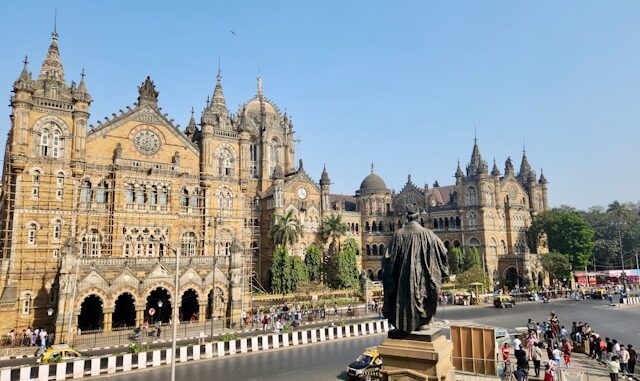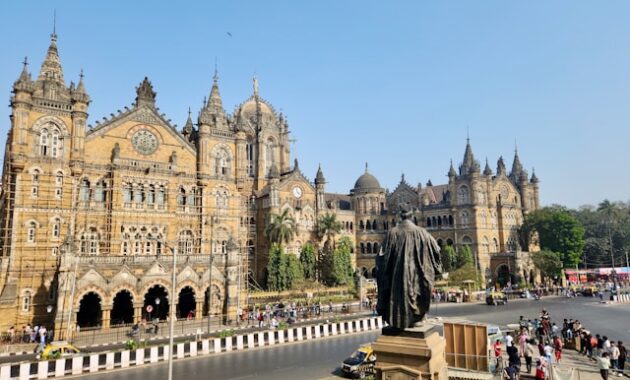
A Historical Marvel and Architectural Gem
Chhatrapati Shivaji Terminus (CST), formerly known as Victoria Terminus, stands as an iconic railway station in the heart of Mumbai. This UNESCO World Heritage Site is not just a transportation hub but a testament to India’s rich history and architectural grandeur. Completed in 1887, it was designed by Frederick William Stevens in an Indo-Gothic style, blending traditional Indian and Victorian Gothic Revival architecture. With its ornate domes, turrets, pointed arches, and intricate wood carvings, CST is a masterpiece that continues to captivate millions of passengers and tourists alike.
A Symbol of Mumbai’s Growth and Connectivity
CST is not just a railway station; it is the beating heart of Mumbai’s railway network. Serving as the headquarters of the Central Railways, it connects Mumbai to various parts of India, handling millions of passengers daily. The terminus serves both long-distance and suburban trains, making it one of the busiest railway stations in the world. Its well-planned design ensures seamless operations, facilitating thousands of train movements every day.
Architectural Brilliance and Cultural Significance
The architectural grandeur of CST is undeniable. Inspired by Victorian Gothic Revival and Indian palace architecture, the station showcases beautiful stained-glass windows, detailed carvings, high vaulted ceilings, and sculptures that depict figures from Indian mythology. The station’s massive central dome, which acts as a focal point, adds to its majestic presence. The interiors are equally breathtaking, with grand staircases, polished marble floors, and intricately designed iron railings, all reflecting Mumbai’s colonial past fused with Indian artistry.
CST’s Role in India’s Freedom Struggle

Chhatrapati Shivaji Terminus is also deeply linked to India’s freedom movement. During the struggle for independence, the station witnessed significant events, protests, and gatherings. Today, it stands as a symbol of resilience and progress, reminding people of India’s colonial past while celebrating its present and future as a thriving democracy.
A Bustling Commercial and Tourist Hub
Surrounding CST, one can find bustling markets, business centers, and heritage buildings. The station is close to prominent landmarks such as Crawford Market, Bombay High Court, and Marine Drive. The area around CST is a hub for commuters, traders, and tourists, making it a key economic center in Mumbai. Many tourists visit CST not only to travel but also to marvel at its historical and architectural beauty.
CST’s Cinematic Legacy
CST has featured in numerous Bollywood movies, including the Oscar-winning film Slumdog Millionaire. The station’s grandeur and lively atmosphere make it a perfect backdrop for films, documentaries, and music videos. The dramatic exteriors and interiors provide a timeless appeal, symbolizing the spirit of Mumbai.
UNESCO World Heritage Recognition
In 2004, UNESCO declared CST a World Heritage Site, recognizing its architectural significance and historical importance. It is one of the few railway stations in the world to receive such an honor, further cementing its status as an international landmark.
Modernization and Preservation Efforts
While preserving its heritage and architectural beauty, CST has undergone several modernization efforts. Digital signboards, automated ticketing systems, and improved security measures have enhanced passenger convenience. The Indian government and railway authorities continuously work on restoration projects to maintain its structural integrity while adapting to modern needs.
A Living Heritage of Mumbai
CST is not just a station; it is a living piece of history. Whether you are a daily commuter, a traveler, or a history enthusiast, CST offers an experience unlike any other. Its grand architecture, rich history, and pivotal role in Mumbai’s daily life make it a landmark that transcends time.